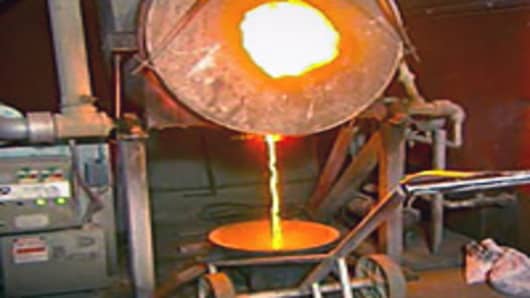The easy gold was mined more than 100 years ago in Cripple Creek, Co. The town is now more of a gambling attraction.
The gold left in the hills just above the town, about an hour outside Colorado Springs, is in low-grade, small concentrations, which take a lot more work to mine and process.
But with gold well north of $1,000 an ounce, the economics of mining, even low-grade gold, have never been better.
"We're actually plowing more money into this operation nowadays than we are drawing off of it, and that's so we can extend the life of this mine," says Ray Dubois, VP and general manager of the Cripple Creek & Victor Mine.
Anglogold Ashanti gained full ownership of this mine in 2008, and the gold producer has been investing in expanding production, literally giving the mine and the 300 jobs that it supports a new lease on life.
"We're at the end of a major extension project here that took the mine life, added four years from 2012 to 2016" says Dubois. "We're going to put a hundred more into the place to take it into the mid 2020s."



